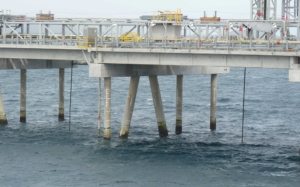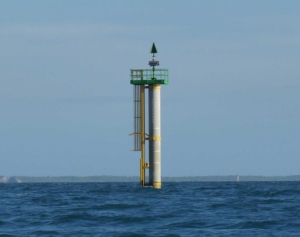Cathodic protection of an LNG jetty
In short
Vandervelde Protection was awarded the contract for design, delivery and commissioning of the cathodic protection of the new LNG jetty in the Gulf of Papua in 2011. Since most part of the construction is built across the sea and a service life-time of 30 years is required, cathodic protection of the construction is required to prevent corrosion of the steel support piles, which are mostly immersed in seawater.

The challenge
The LNG and condensate offloading jetty is constructed adjacent to the LNG facility, twenty kilometers northwest of Port Moresby. The construction consists of a 2.4 km long trestle with substation platform, loading platform and a single LNG load-out berth. The approach-trestle is supported on approximately 550 steel piles. Farther away, 19 navigational aids were built for guiding vessels towards the loading platform.
The challenge was to protect the structure against corrosion in an efficient and cost-effective manner, fulfilling the design life-time requirement of (at least) 30 years. Another design and engineering challenge was the strong variation in water levels of the Gulf of Papua. During low tide, the water level near the coast decreased to almost a dry level, while the water level strongly increased farther away from the coast.
The solution
Vandervelde Protection applied multiple methods of cathodic protection to protect the constructions:
- Impressed Current Cathodic Protection (ICCP) for the steel support pillars of the platform and jetty.
- Galvanic anodes for the navigational aids without the need for an external power supply.
Read more about the different cathodic protection systems.
The support pillars located at the shallow coast was protected by installing anodes in wells. Farther away from the coast, where the depth of the sea significantly increased, the anodes were suspended from the deck of the trestle into the sea.
For the 19 navigational aids, cathodic protection was achieved by applying 68 sacrificial aluminum anodes.
This unique combined system was designed to allow monitoring, inspection, maintenance and troubleshooting; to ensure that cathodic protection is active and effective.


